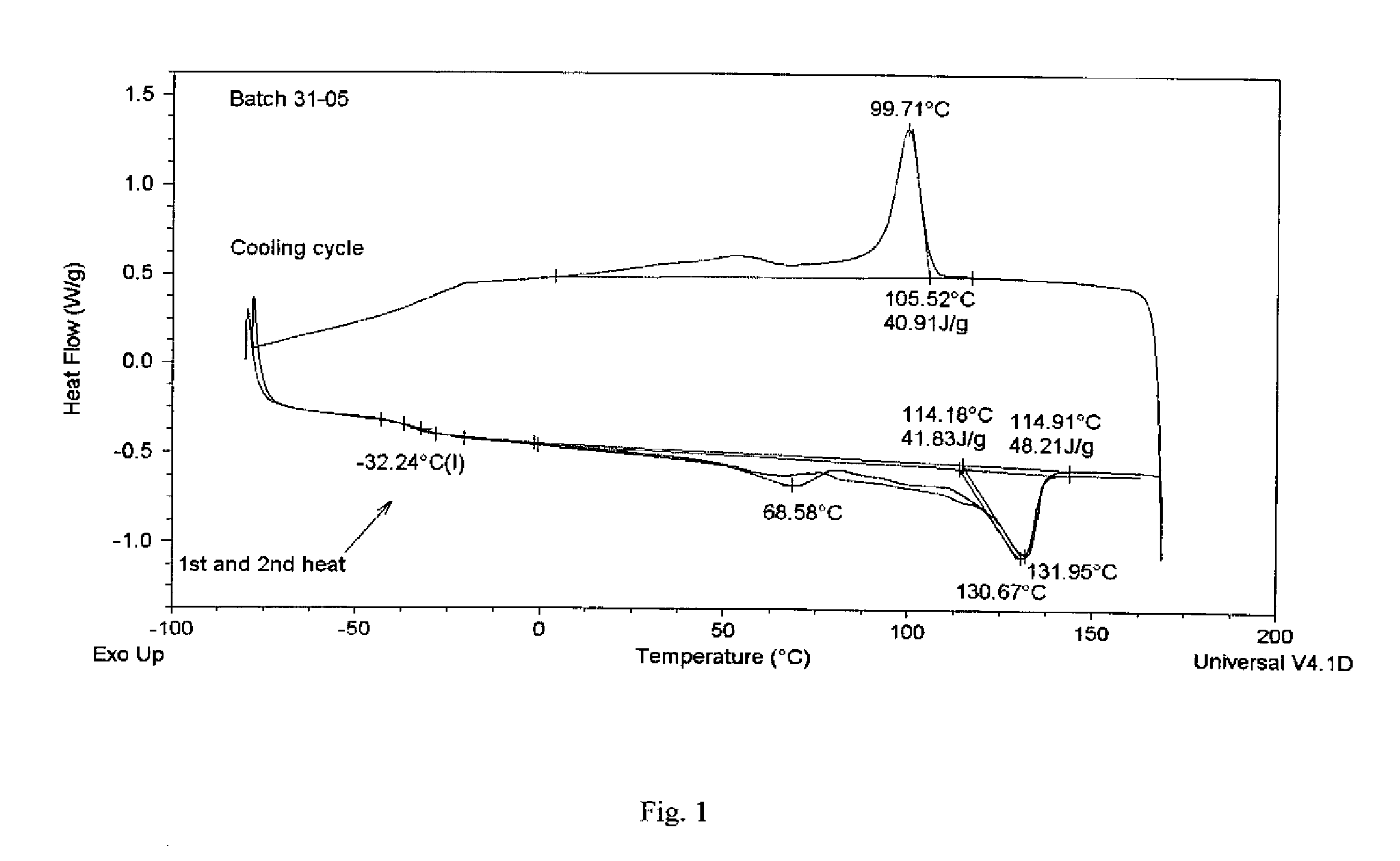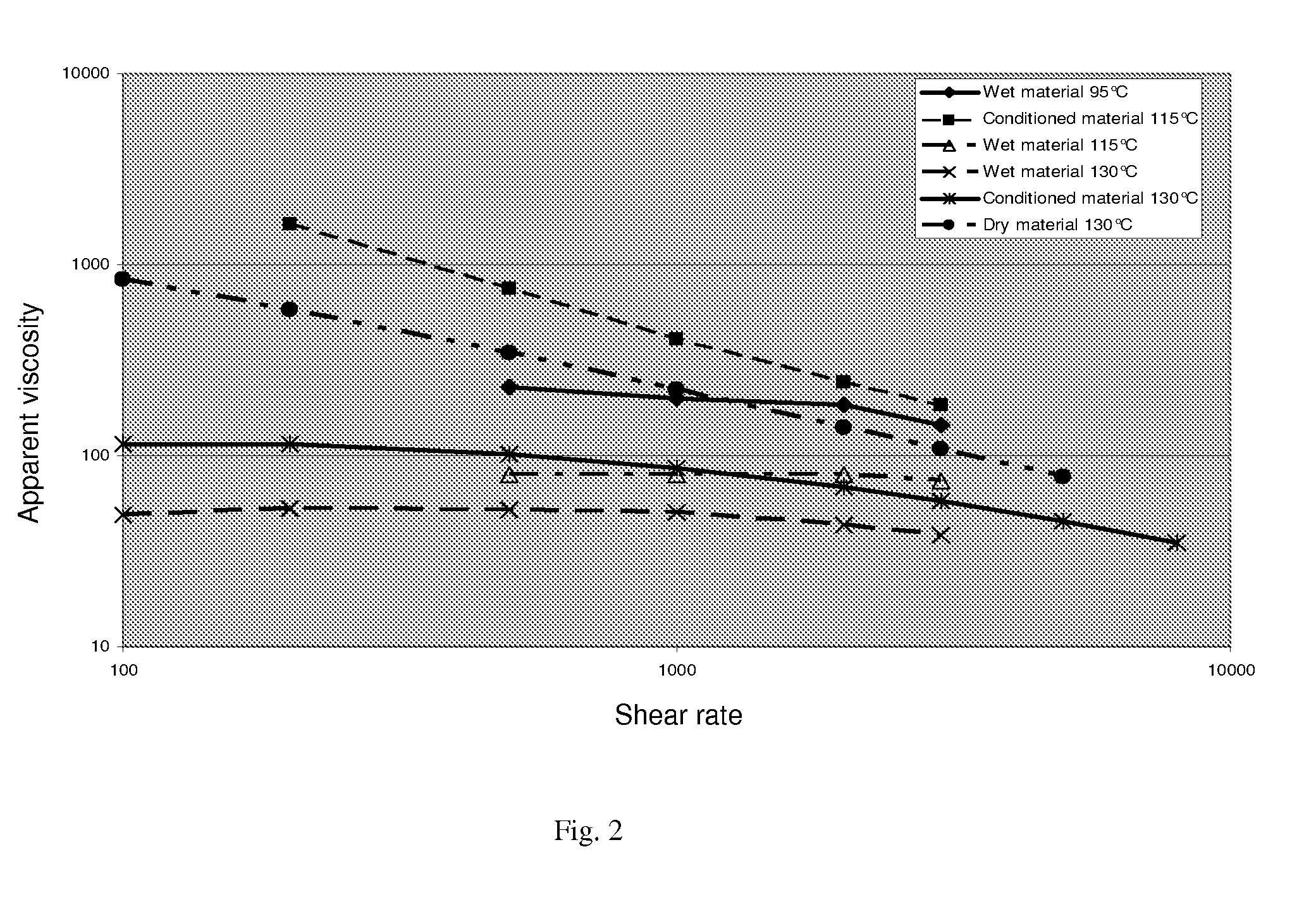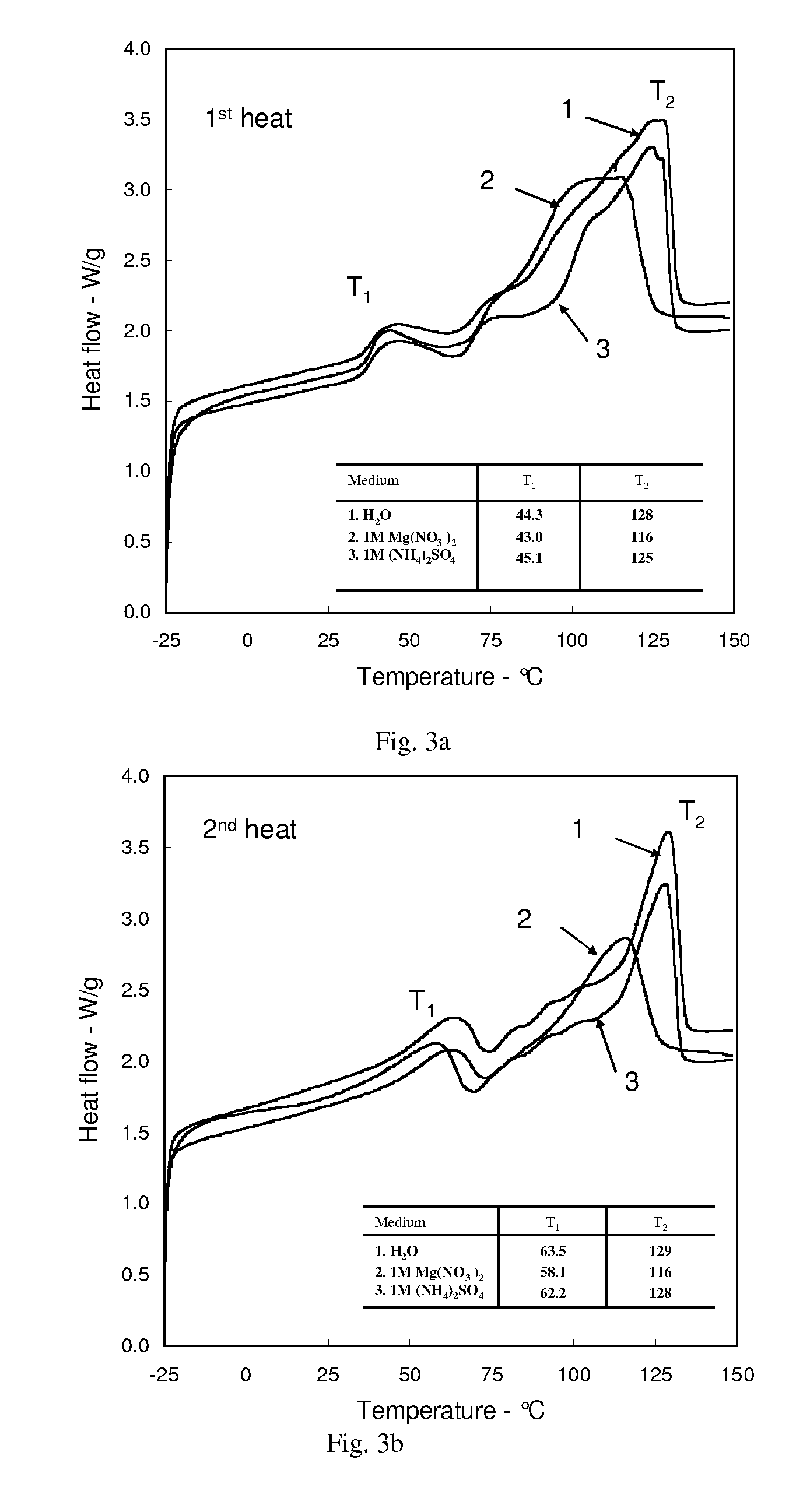Extruding organic polymers
a technology of organic polymers and polymers, applied in the field of extruding organic polymers, can solve the problems of gas bubbles and fractures in the maximum process temperature and pressure is limited to values below those needed for optimal process performance, and the shaped organic polymer has comparatively inferior physical and mechanical properties
- Summary
- Abstract
- Description
- Claims
- Application Information
AI Technical Summary
Problems solved by technology
Method used
Image
Examples
fifth embodiment
Fabricating Fibers Comprising MSA Materials by Melt Electrospinning Process of the Fifth Embodiment
[0095]Whereas the extrusion process of the first embodiment comprises preparing any class of extruded thermoplastic product such as, for example, a class selected from the group consisting of: a film or sheet, fabricating a fiber, forming a hose, forming tubing, casting a part, and molding a part, the melt electrospinning process of the fifth embodiment comprises fabricating a fiber comprising a MSA material.
[0096]The melt electrospinning process of the fifth embodiment preferably is carried out by employing the second rheological additive with the melt electrospinning process as described in PCT International Patent Application Publication Number WO 2008 / 101051. For example, in a typical melt electrospinning process, the melt of the second composition of the fourth embodiment is fed into or onto a spinneret from, for example, a syringe at a constant and controlled rate using a meterin...
example 1
Humidified PEA-C2C50% Material
[0116]Humidify a sample of the PEA-C2C50% material of Preparation 1 by exposing the sample to Deutsches Institut für Normung e. V. (DIN) standard conditions of 23° C. and 50% relative humidity to give the humidified PEA-C2C50% material of Example 1.
example 2
Hydrated PEA-C2C50% Material
[0117]Hydrate a sample of the PEA-C2C50% material of Preparation 1 by contacting the sample to excess water for 24 hours to give the hydrated PEA-C2C50% material of Example 2. Determine water content of the hydrated PEA-C2C50% material to be 4.7 wt % by Karl Fischer titration method.
Examples 3A1 to 3A3 and 3B1 to 3B4
Fibers Comprising the Humidified PEA-C2C50% Material of Example 1 and Hydrated PEA-C2C50% Material of Example 2, Respectively
[0118]Separately repeat the procedure of Comparative Example 1 four times, except use the humidified PEA-C2C50% material of Example 1 instead of the dried PEA-C2C50% material of Preparation 4, a die having an inner diameter of 1.0 mm instead of 0.5 mm, and an initial sample melt temperature of 130° C., 130° C., 115° C., or 95° C. instead of 125° C., to separately give the fibers of Examples 3A1 (130° C., 0), 3A2 (130° C.), and 3A3 (115° C.), respectively. The humidified PEA-C2C50% material of Example 1 is not processable...
PUM
| Property | Measurement | Unit |
|---|---|---|
| diameter | aaaaa | aaaaa |
| temperature | aaaaa | aaaaa |
| temperature | aaaaa | aaaaa |
Abstract
Description
Claims
Application Information
 Login to View More
Login to View More - R&D
- Intellectual Property
- Life Sciences
- Materials
- Tech Scout
- Unparalleled Data Quality
- Higher Quality Content
- 60% Fewer Hallucinations
Browse by: Latest US Patents, China's latest patents, Technical Efficacy Thesaurus, Application Domain, Technology Topic, Popular Technical Reports.
© 2025 PatSnap. All rights reserved.Legal|Privacy policy|Modern Slavery Act Transparency Statement|Sitemap|About US| Contact US: help@patsnap.com



